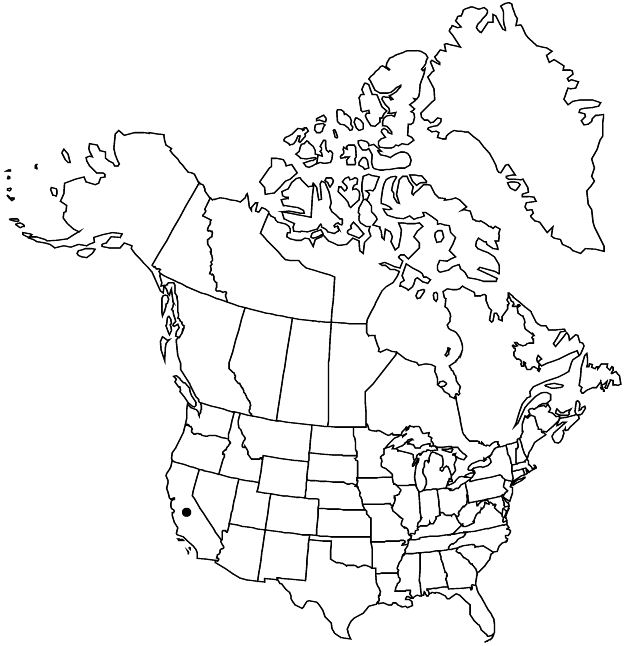Ivesia longibracteata
Syst. Bot. 14: 233, fig. 1. 1989.
Plants green, ± tufted; taproot ± stout, not fleshy. Stems ascending to erect, 0.3–1.2 dm. Basal leaves weakly planar to loosely ± cylindric, (0.5–) 2–4 (–6) cm; sheathing base glandular abaxially, otherwise glabrous; petiole 0.5–2 cm, hairs 0.2–1 mm; leaflets 5–6 per side, 2–6 mm, ± short-hirsute, glandular-puberulent, lobes 2–7, oblanceolate to spatulate or obovate, apex not setose. Cauline leaves 1–3, not paired. Inflorescences 3–14-flowered, 1–2.5 cm diam.; glomerules 1. Pedicels 1.5–6 mm. Flowers 8–10 mm diam.; epicalyx bractlets linear to narrowly lanceolate or elliptic, 2.5–5 mm, longer than sepals; hypanthium shallowly cupulate, 0.5–1 × 2–3 mm; sepals 1.5–2.5 mm, ± acute; petals pale-yellow, linear to narrowly oblanceolate, 1.5–2.5 mm; stamens 5, filaments 0.7–1.3 mm, anthers yellow, 0.5–0.8 mm; carpels 6–11, styles 1–1.5 mm. Achenes cream to light tan, 1.2–1.5 mm.
Phenology: Flowering summer.
Habitat: Dry crevices of granodioritic igneous rock, in mixed oak-conifer woodlands
Elevation: 1200–1400 m
Discussion
Of conservation concern.
Ivesia longibracteata is known only from the Castle Crags area of Shasta County. The epithet alludes to a diagnostic characteristic unique in the genus: the epicalyx bractlets are longer than the sepals. The plants grow on vertical rock faces, a habitat more characteristic of sect. Setosae; however, the stems are ascending to erect and do not form hanging clumps, and the pedicels are not curved in fruit.
Selected References
None.
Lower Taxa
"thin" is not a number."dm" is not declared as a valid unit of measurement for this property."dm" is not declared as a valid unit of measurement for this property."dm" is not declared as a valid unit of measurement for this property.
